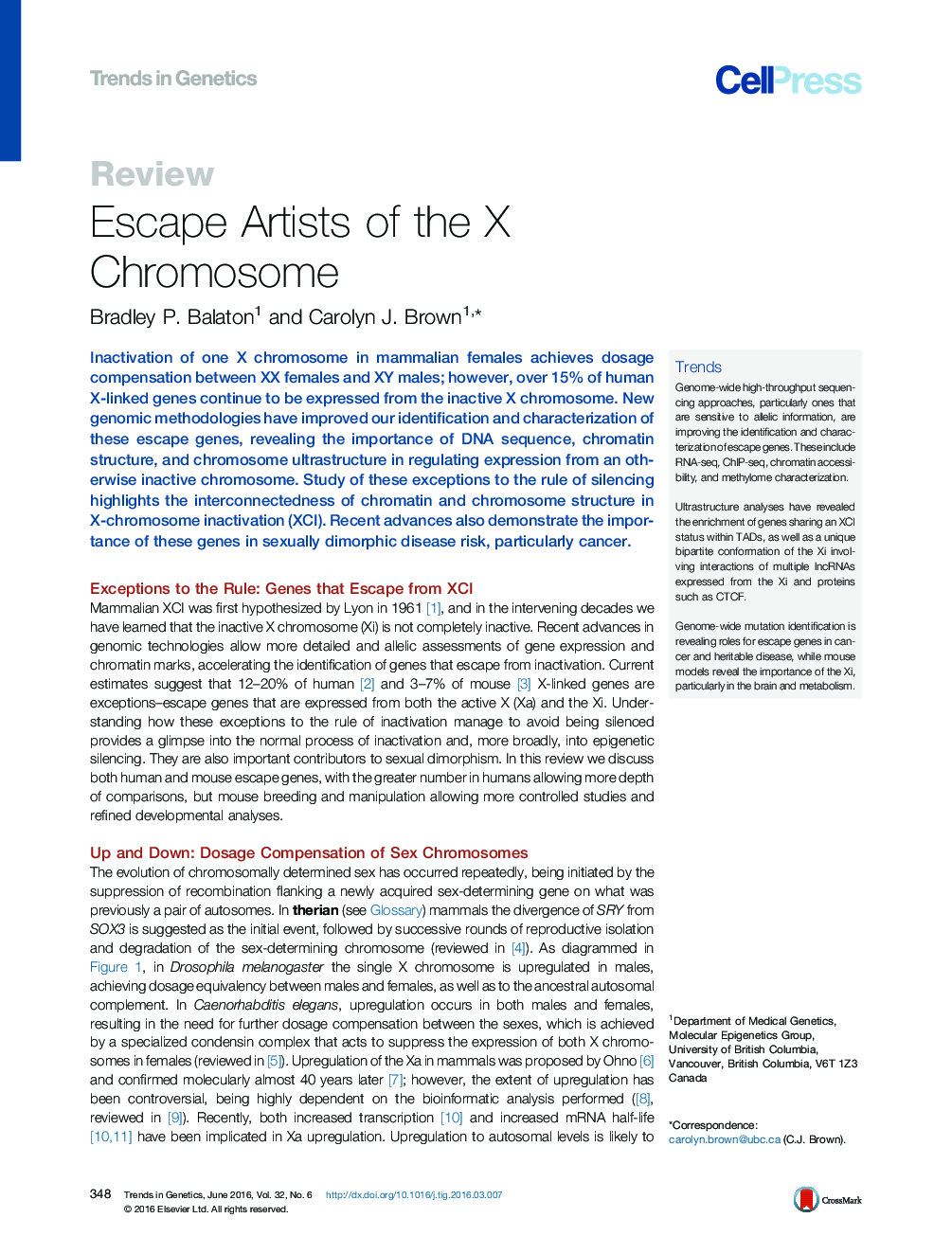| Article ID | Journal | Published Year | Pages | File Type |
|---|---|---|---|---|
| 2824610 | Trends in Genetics | 2016 | 12 Pages |
Inactivation of one X chromosome in mammalian females achieves dosage compensation between XX females and XY males; however, over 15% of human X-linked genes continue to be expressed from the inactive X chromosome. New genomic methodologies have improved our identification and characterization of these escape genes, revealing the importance of DNA sequence, chromatin structure, and chromosome ultrastructure in regulating expression from an otherwise inactive chromosome. Study of these exceptions to the rule of silencing highlights the interconnectedness of chromatin and chromosome structure in X-chromosome inactivation (XCI). Recent advances also demonstrate the importance of these genes in sexually dimorphic disease risk, particularly cancer.
TrendsGenome-wide high-throughput sequencing approaches, particularly ones that are sensitive to allelic information, are improving the identification and characterization of escape genes. These include RNA-seq, ChIP-seq, chromatin accessibility, and methylome characterization.Ultrastructure analyses have revealed the enrichment of genes sharing an XCI status within TADs, as well as a unique bipartite conformation of the Xi involving interactions of multiple lncRNAs expressed from the Xi and proteins such as CTCF.Genome-wide mutation identification is revealing roles for escape genes in cancer and heritable disease, while mouse models reveal the importance of the Xi, particularly in the brain and metabolism.
